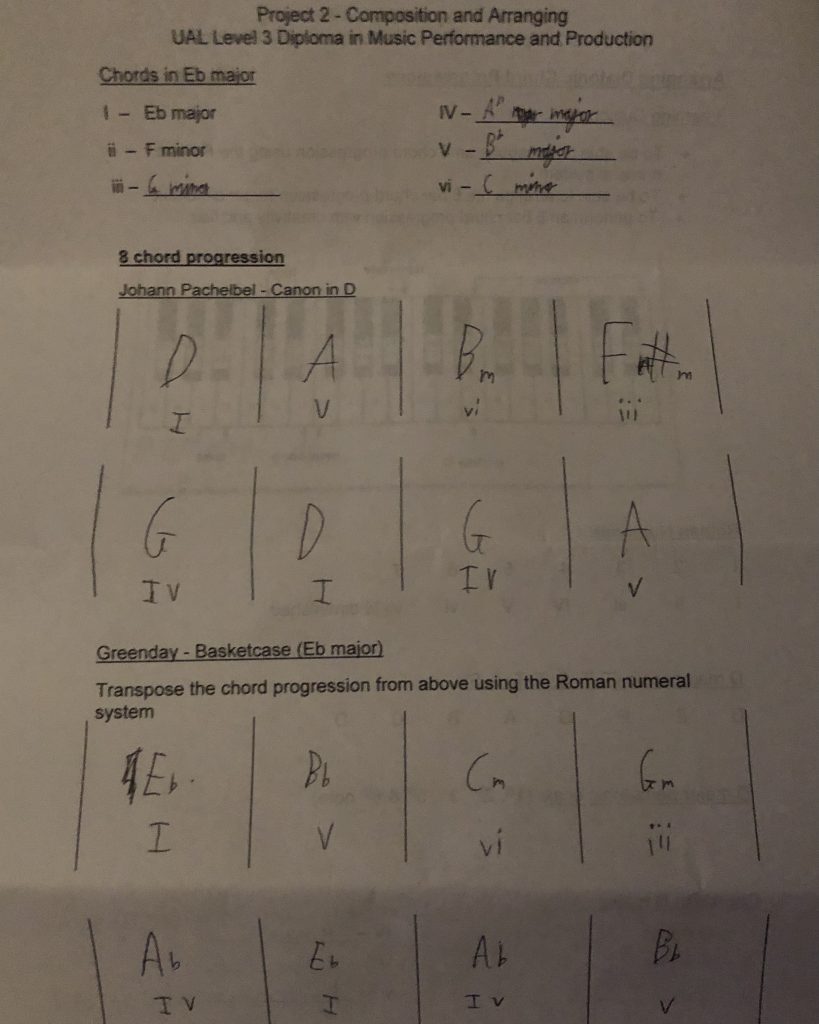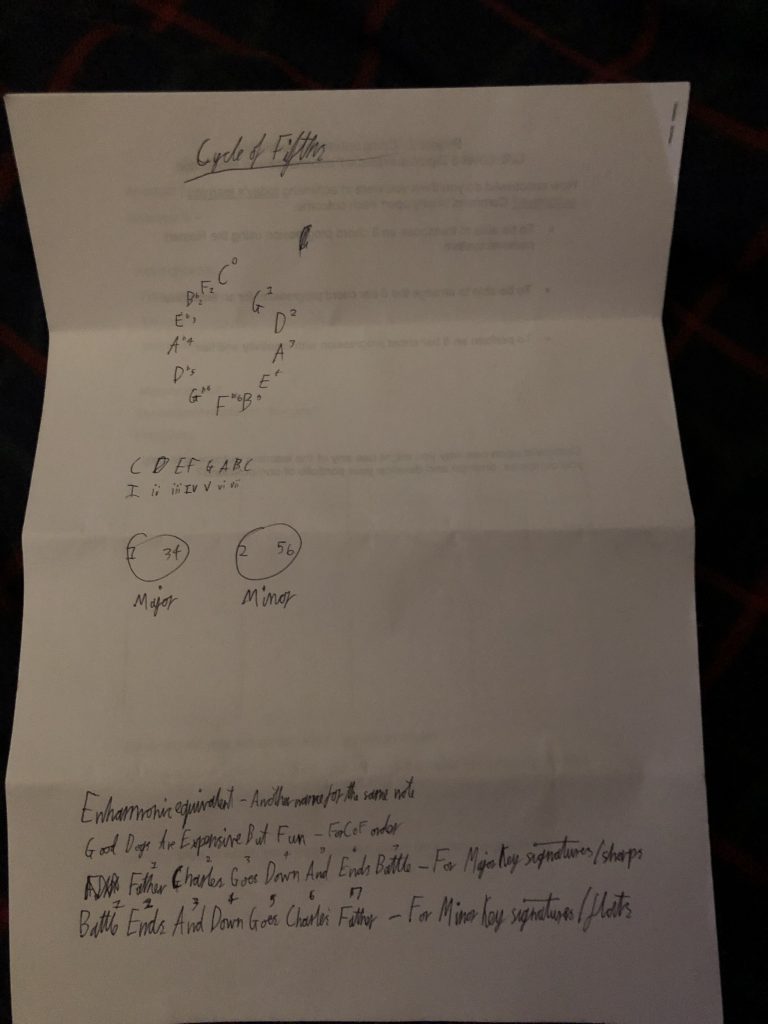The next exercise first taught us a very common chord progression which has been used in many, many instances – this being German composer Johann Pachelbel’s “Canon in D”. Then we went on to transpose the same progression to a different key with the corresponding Roman numerals, going from the key of D to the key of Eb. Learning transposition techniques will allow us to progress as musicians who can improvise and change key on the fly, giving us more freedom to create music.
After transposing that chord progression we played it together, and were introduced to Green Day’s “Basket Case” which utilises this same chord progression, albeit with a slight change. Within music there are only so many chord progressions, but transposition allows greater freedom and room to play around, making it an important concept for artists.

Above is our rendition of “Basket Case”, taking what we has just learnt and putting it into practice. For example, as the bassist I need to play one fret higher to transpose, which is what I did, changing from a D to an Eb, an A to a Bb, a Bm to a Cm, and so on for all the notes I was required to play.

Above are notes from the lesson. As you can see, I’ve laid out the basic cycle of fifths, a musical image which is named such because every note is a fifth away from the next one, with notation to show the number of sharps/flats in each key, which then corresponds to the two mnemonics we learnt to help us easily figure out what notes are in each key. Before that however is the mnemonic to know the order of the cycle of fifths. Another point is the Roman numerals, which I separated based on whether they correlate to a minor or a major. Finally, one little bit of terminology which I found interesting was “enharmonic equivalent”, which essentially means two notes which have the same sound but can differ in name, for example a C# and a Db.